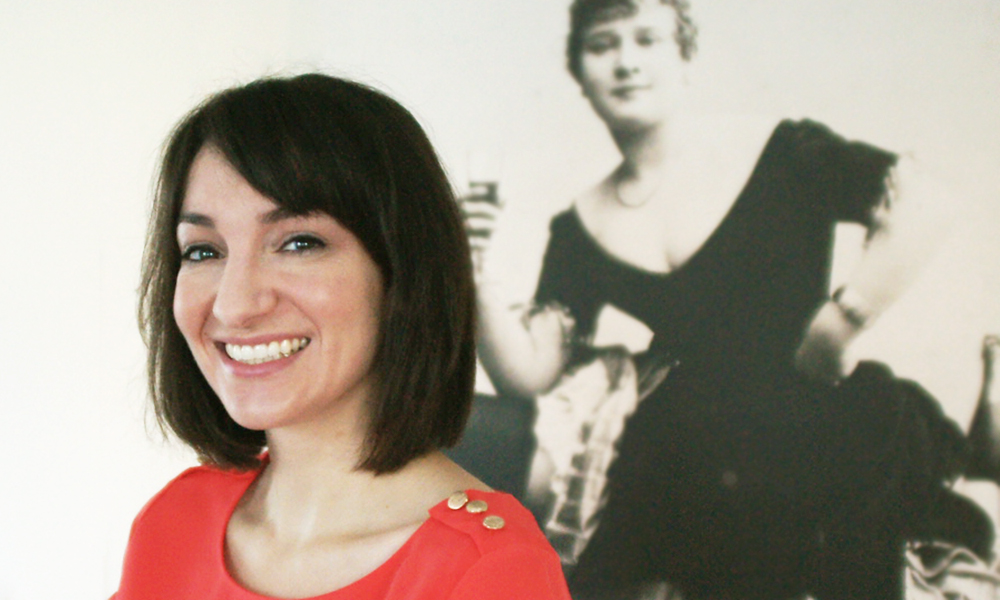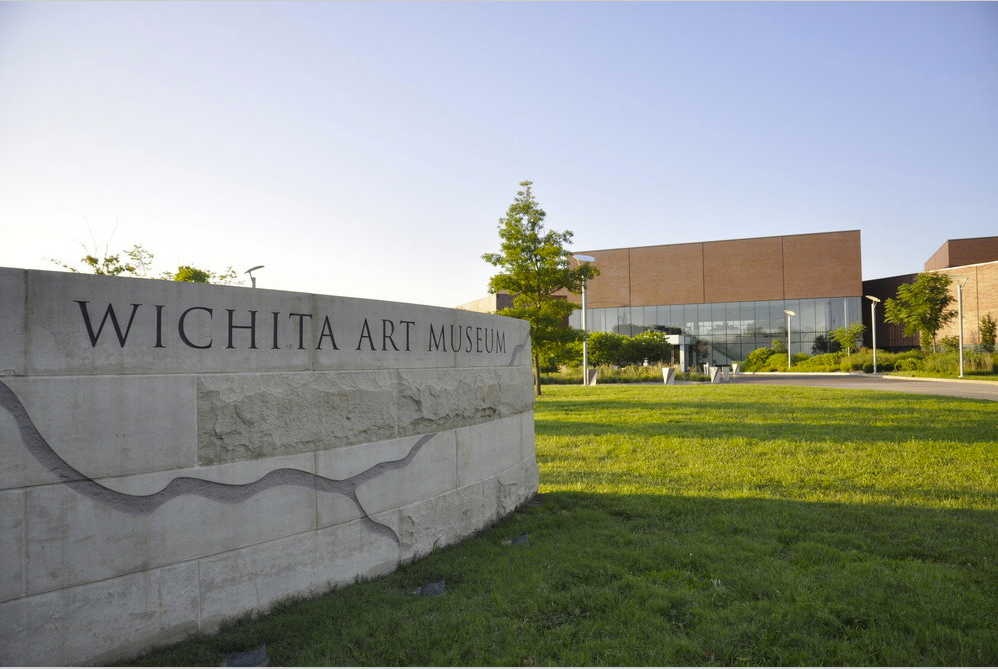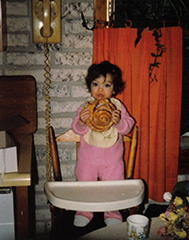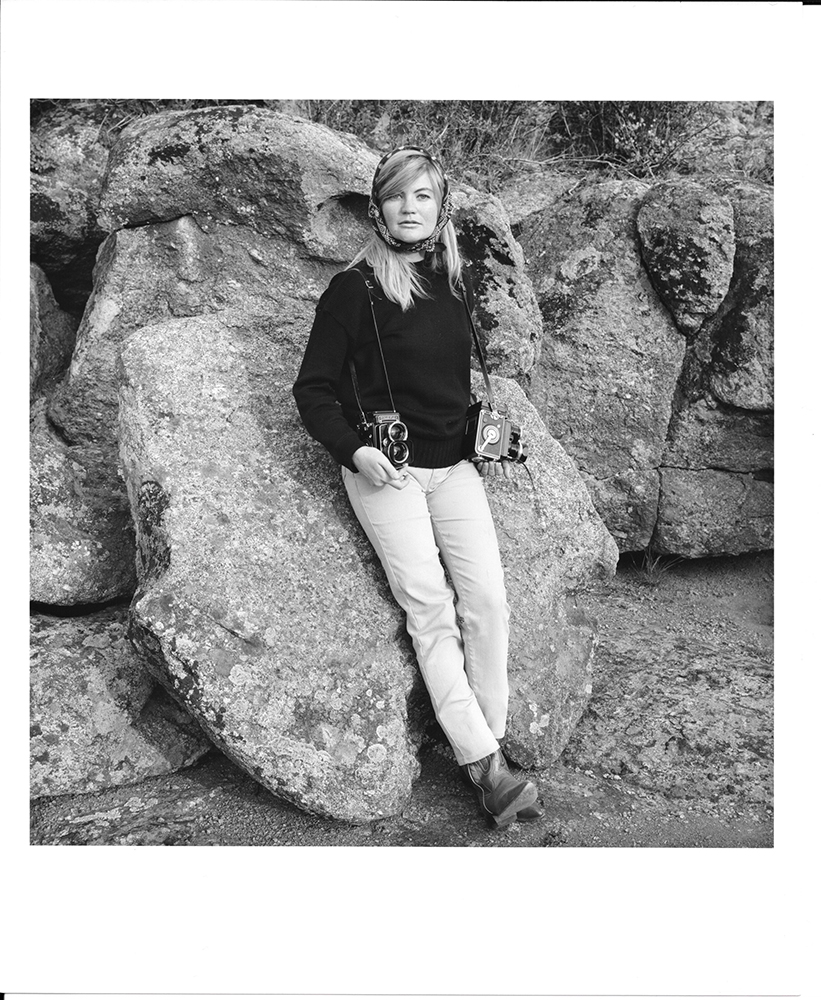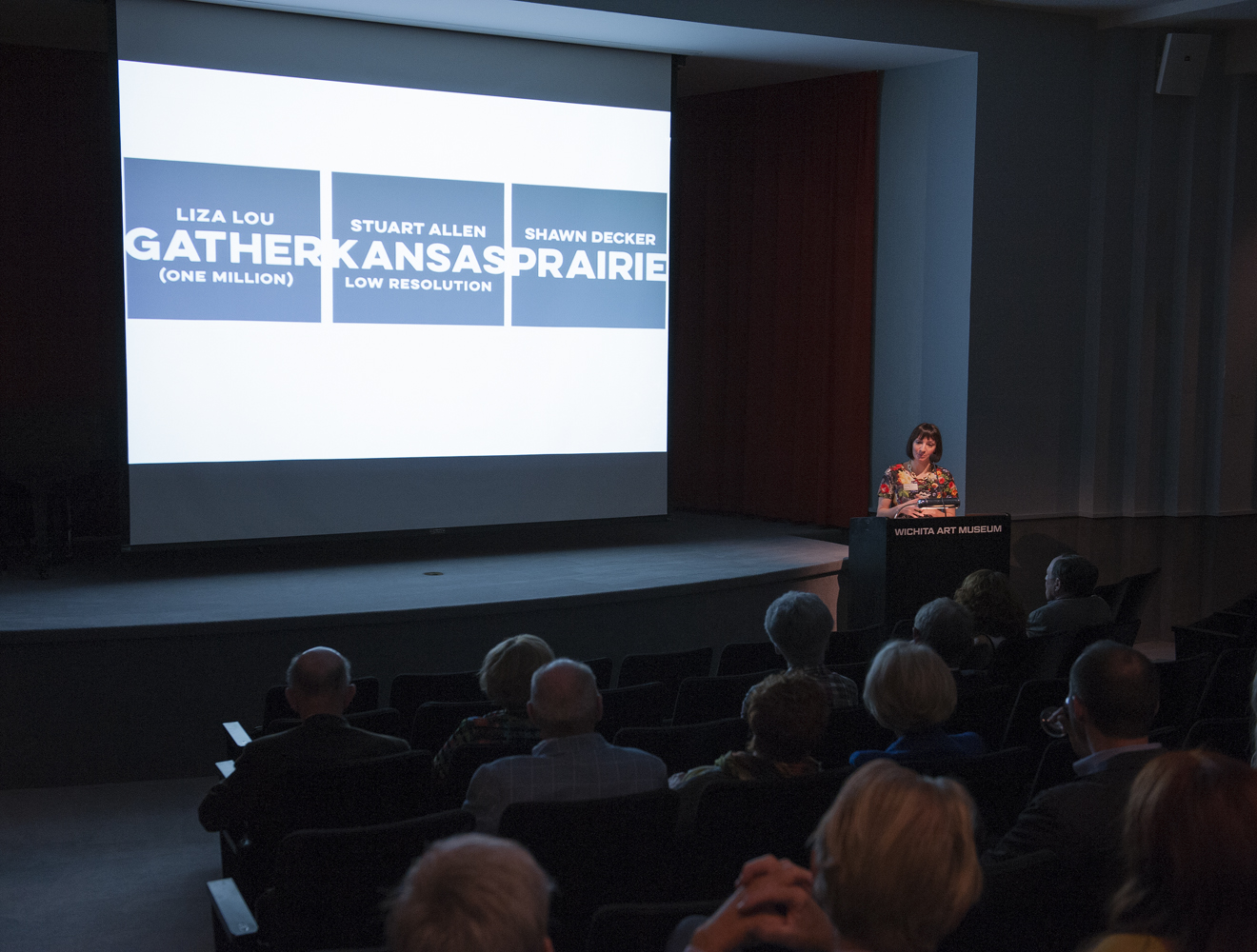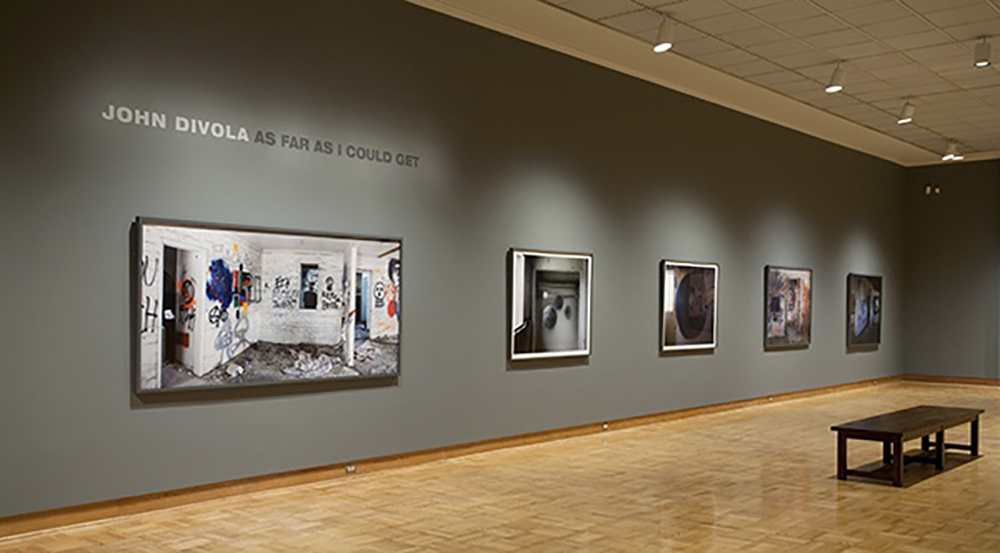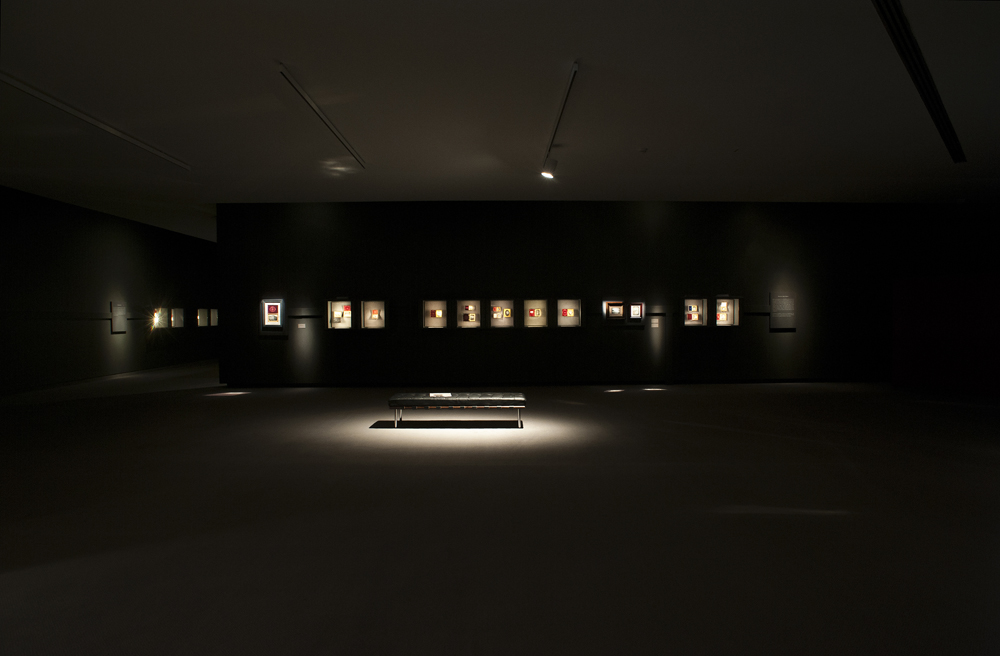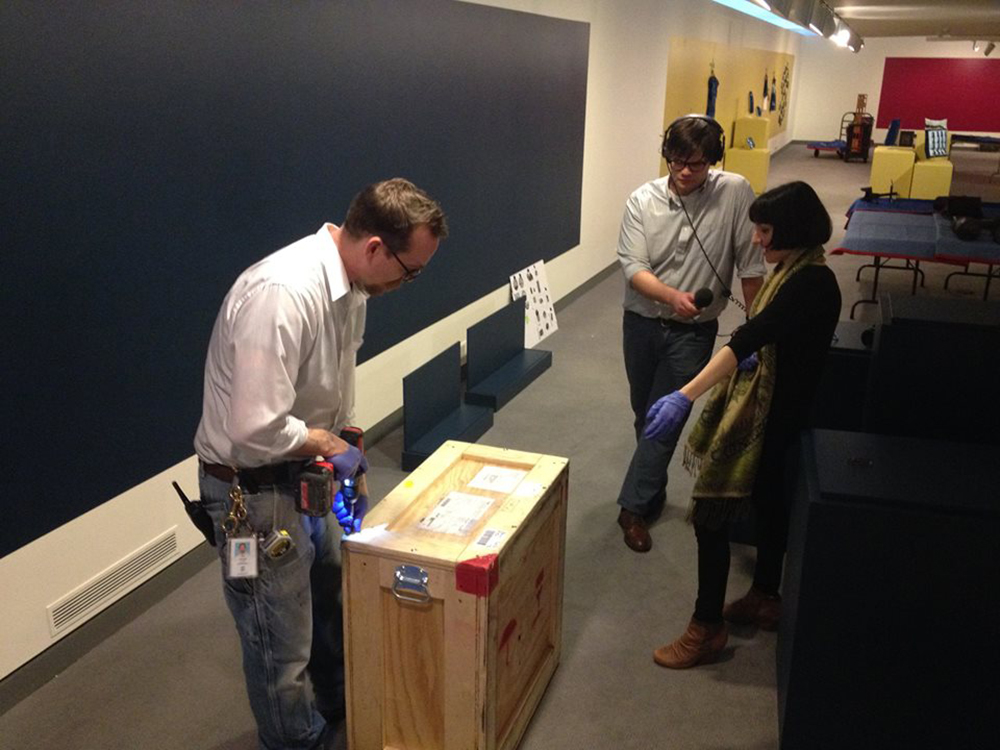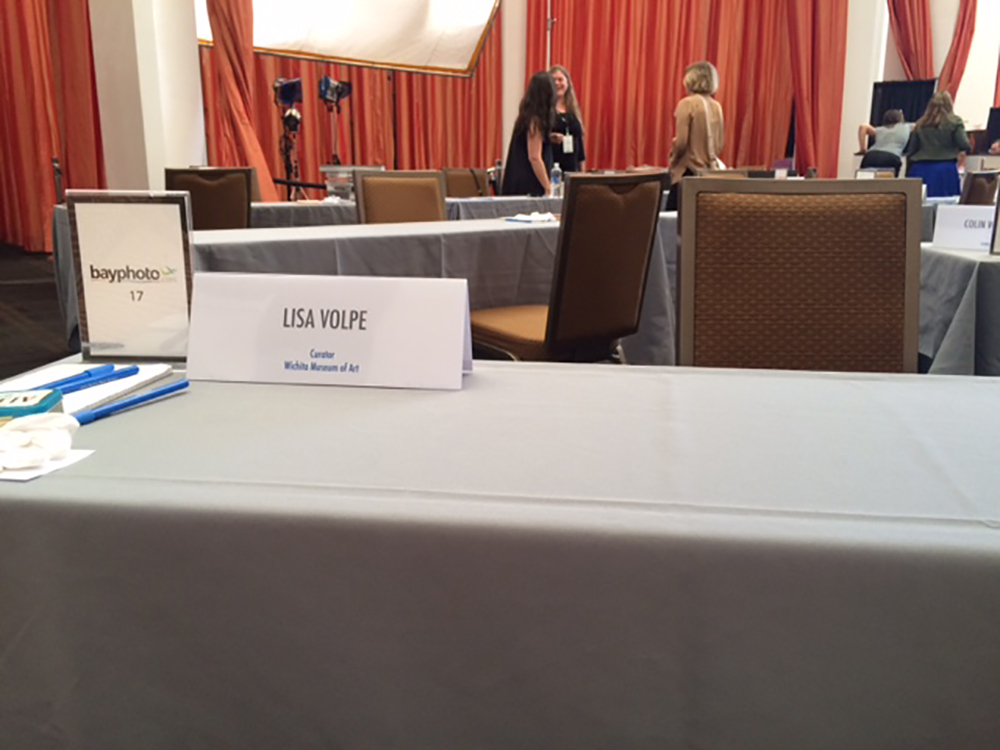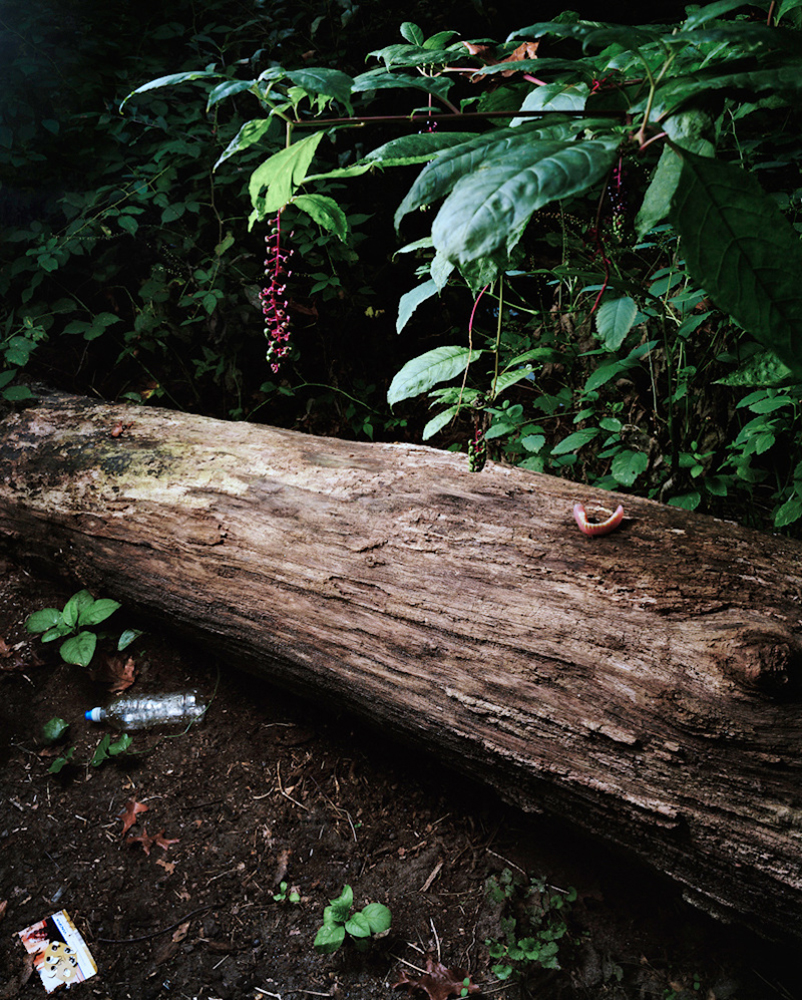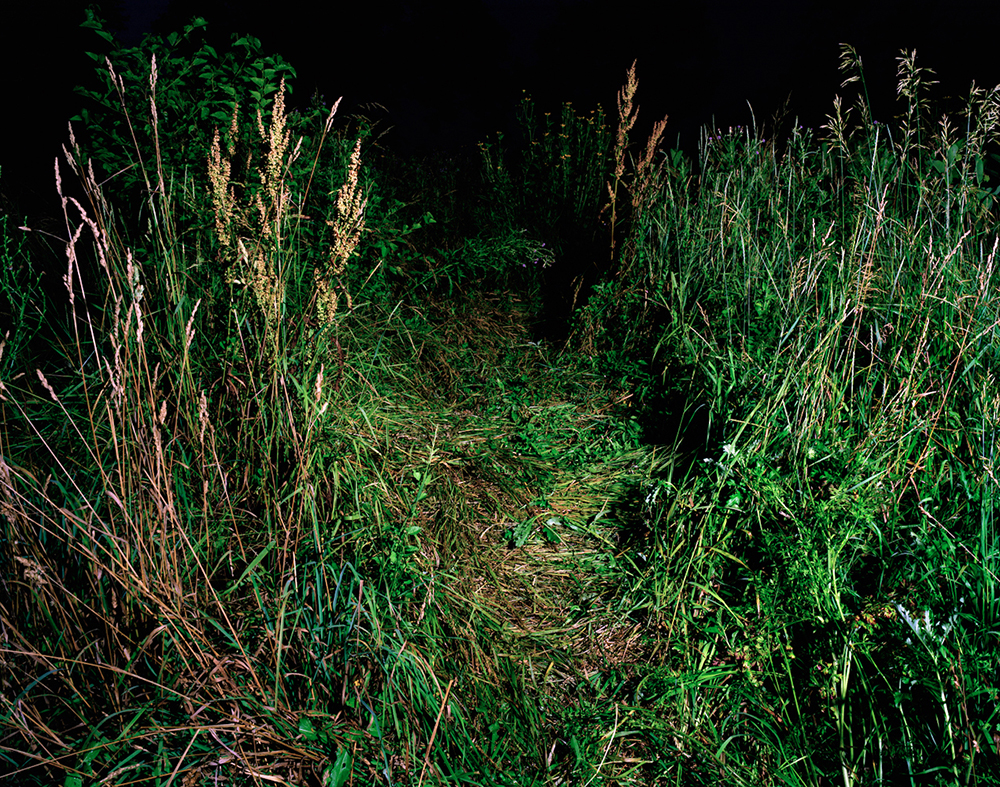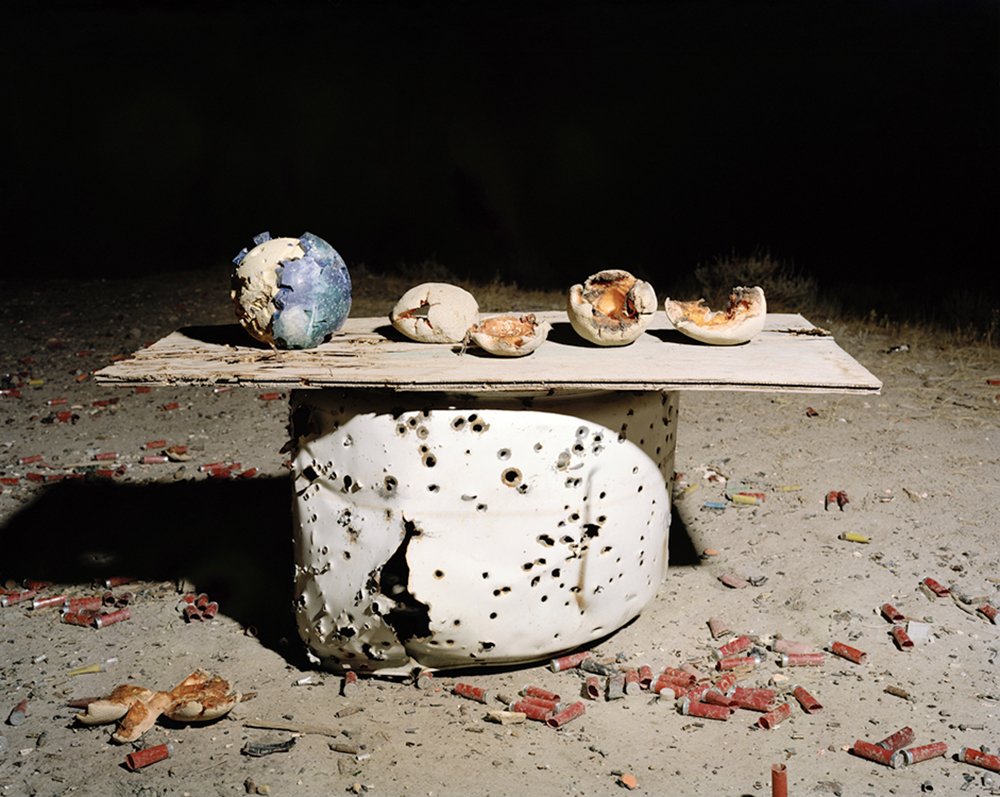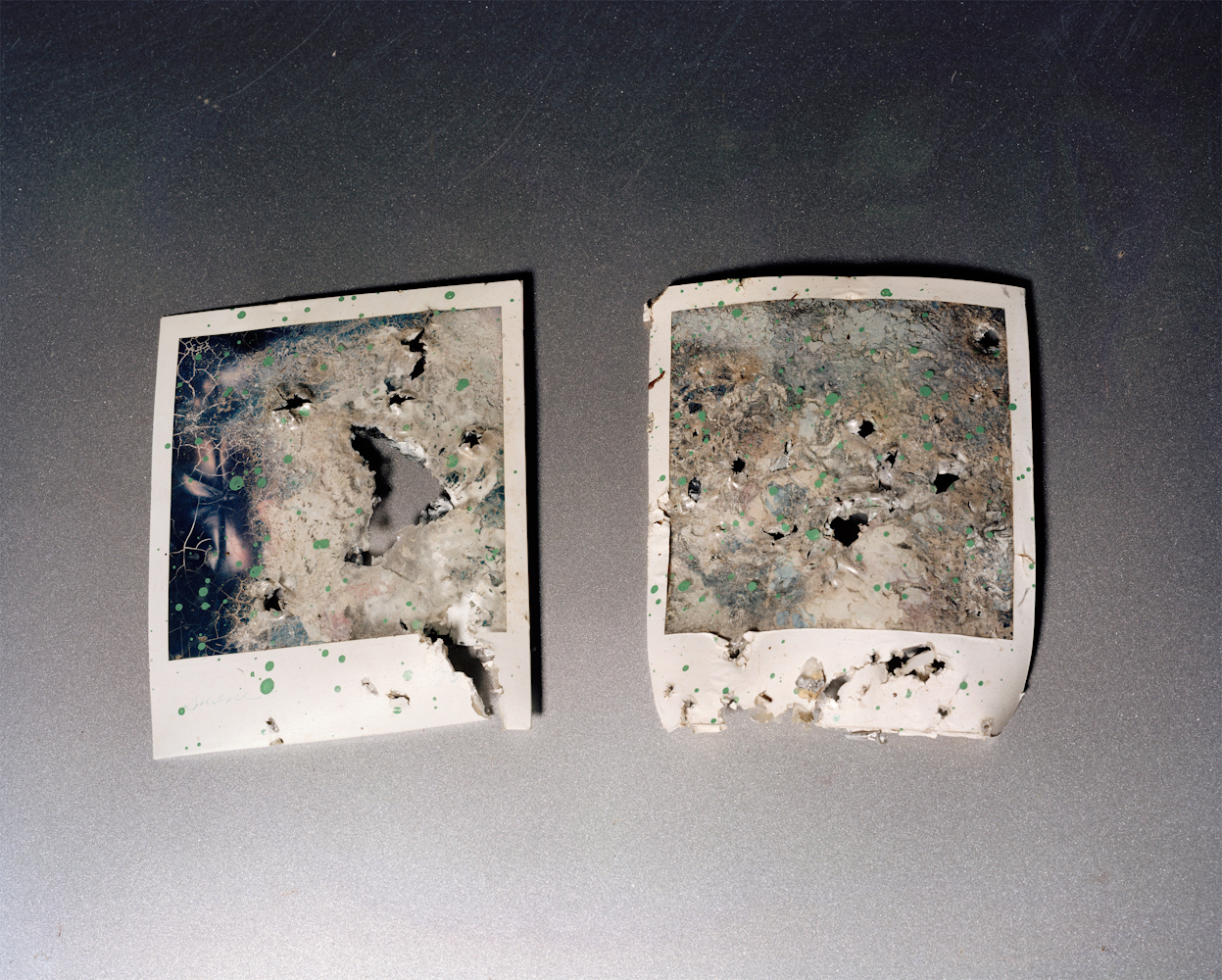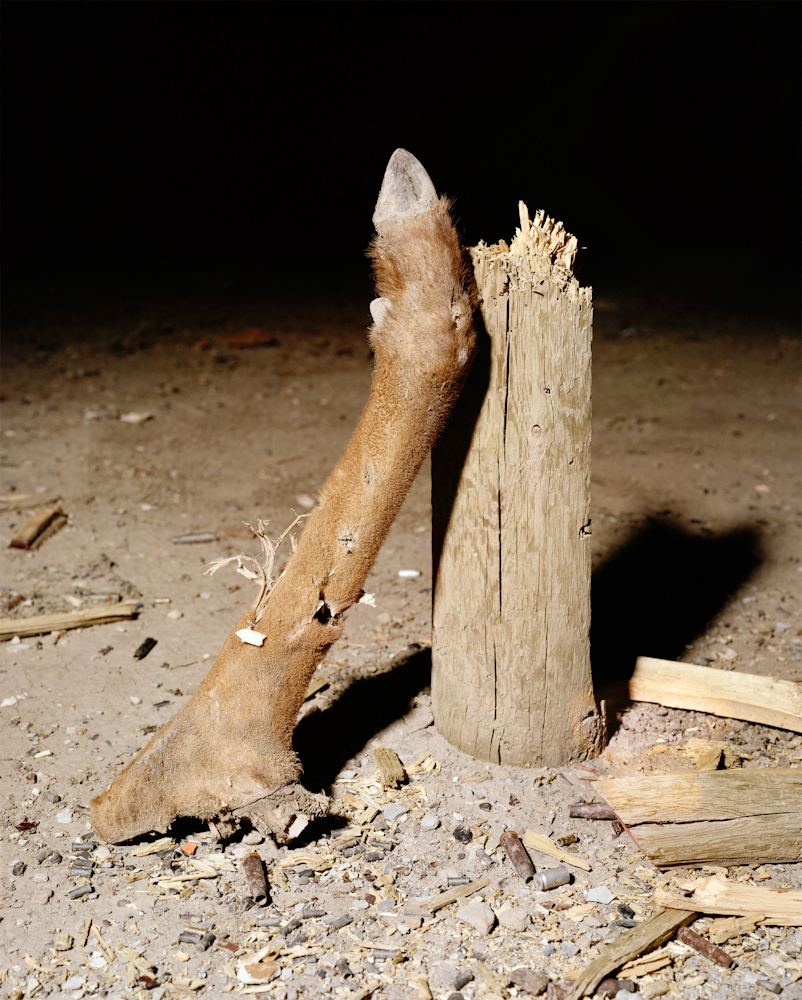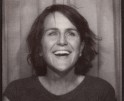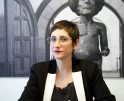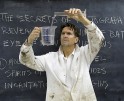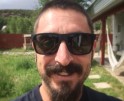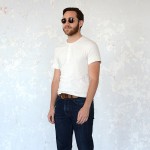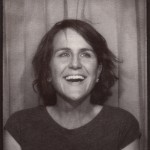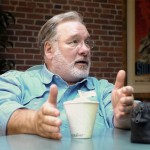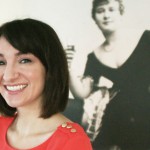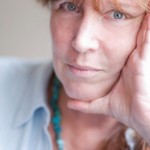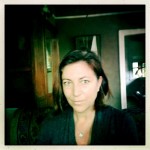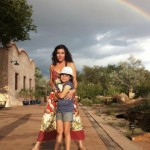The Lisa Volpe Mixtape
I first met curator Lisa Volpe some years ago when she was working at the Santa Barbara Art Museum in the throes of preparing a seminal exhibition for the museum on portraiture, and then later, our paths crossed various times in Los Angeles and Santa Barbara. Over the years, I have been struck by her intelligence, her commitment to the photographic medium, and her sense of humor and fun. She has been a regular reviewer at events like the Palm Springs Photo Festival, PDN, and the Medium Festival of Photography (in addition to Art School and Graduate Reviews) and I am thrilled that Lisa is joining Lenscratch as a Guest Curatorial Editor, contributing essays and insights into the photography world from the perspective of a museum curator. Her enthusiasm for all things photographic is palatable, and we are lucky to have her as a champion of our medium.
Lisa Volpe is the Curator at the Wichita Art Museum. She previously held several positions in the photography department at the Santa Barbara Museum of Art (SBMA). She served as a the Ralph M. Parsons Curatorial Fellow for the Wallis Annenberg Photography Department at the Los Angeles County Museum of Art (LACMA) and as the Case Western University Fellow in the photography department at the Cleveland Museum of Art. Volpe lectured in the art history department at the University of California, Santa Barbara and held an adjunct professorial position at the Brooks Institute. She contributed to and helped organize several collaborative exhibitions and publications including John Divola: As Far As I could Get, a collaboration between SBMA, LACMA, and the Pomona College Museum of Art; and Chaotic Harmony: Contemporary Korean Photography a collaboration between the Houston Museum of Fine Arts and SBMA.
And now, The Lisa Volpe Mixtape:
Tell us about your growing up and what brought you to photography.
I grew up in Youngstown, Ohio, listening to stories about my maternal grandfather, Al. He was an amateur photographer. My mother fascinated me with her tales about the mysteries of their basement darkroom and the magic of waking up to find photographs floating in the bathtub. My grandfather died before I was born, but everyone always told me we were a lot alike. I think I started exploring photography as a way to connect with him. At Dartmouth College, I split my time between art history classes and the darkroom, knowing that I wanted to be a photo historian.
I’ve been incredibly lucky to be mentored and encouraged by amazing people along the way. While getting my MA, I received a fellowship to work with Tom Hinson for two years at the Cleveland Museum of Art, and then I went on to the University of California, Santa Barbara to work with Bruce Robertson for my PhD. In addition to my wonderful advisor, two incredible females (with two radically different perspectives about photography) challenged the ways I think about and write about the medium. Abigail Solomon-Godeau guided me through the often-murky world of photography theory and I was honored to work as her research assistant for several years. And, my dear friend, boss, and mentor Karen Sinsheimer taught me…well, everything else! The minute I arrived in Santa Barbara, I took the bus to the museum and asked Karen to take me on as an intern. Soon after, she hired me as an assistant and I worked with her for more than five years. She was creative, visionary, supportive, brave, and kind. Today, her portrait hangs above my desk. She’s my daily reminder of why this profession matters.
What is your title and job description and tell us about a typical day?
I am the Curator of the Wichita Art Museum (WAM). I’m always working on several projects simultaneously and so I’m constantly juggling priorities.
On any given day, you might find me writing exhibition texts, answering emails, measuring walls, checking budgets, meeting with donors or artists, arranging pedestals, cleaning Plexiglas, helping to paint galleries, sorting files, preparing mailings, giving tours or talks…anything. As any curator will tell you, it’s a position that encompasses everything except big rig truck driving.
What are some of your proudest achievements?
In 2014, I was the project manager for John Divola: As Far As I Could Get. The exhibition was a collaborative project led by the Santa Barbara Museum of Art, with different aspects of Divola’s work shown simultaneously at SBMA, LACMA, and the Pomona College Museum of Art. With three venues collaborating and a catalogue, it was a major organizational feat, but the results were worth it and a whole new audience was introduced to Divola’s body of work.
I’m also very proud of the photography exhibitions that I’ve organized at WAM. Before my arrival in 2014, the museum hadn’t been exhibiting photography, but we are changing that! For the past two years, we’ve made a real effort to raise the profile of photography at the museum. We’ve developed terrific exhibitions—Five Alchemists, No Mountains in the Way: 40 years later, Stuart Allen: KANSAS low resolution, and Jesse Alexander: The Golden Age of Motorsports (coming in summer 2016)—and brought in amazing exhibitions, including Photographic Wonders from the Nelson Atkins and Gordon Parks: Back to Fort Scott from the Museum of Fine Arts, Boston. And we are committed to acquiring more photography for the collection. It’s incredibly satisfying to watch our audience for photography grow.
What do you look for when attending a portfolio review?
Questions. I think the best work is produced by artists who are curious—those who pose questions and then use the medium to find the answers. Similarly, great work raises questions for the viewer. It makes them consider the world in a new way, or to reconsider what they’ve taken for granted. And finally, the review session should leave time for questions. I enjoy speaking with artists who ask me specific things about their work. It allows us to begin a dialog. I love having that discussion and helping in any way that I can.
Any advice for photographers coming to a review event?
Be yourself and be patient! During a review, I want to get to know you and your work. I know a lot of photographers come to a review event hoping that curators will buy their work or give them an exhibition. That rarely happens. The review is more of a getting-to-know-you opportunity. If I get the chance to understand your work and your point of view, I’m going to remember it. A few months or years later, when I’m working on a group exhibition, I might give you a call. I’ve also invited photographers who I met at reviews to participate in panel discussions at the museum, to give workshops, etc. It just takes time. In the meantime, keep in touch! Send me emails or links to let me know how your work is progressing.
Also, I know it’s tempting to bring an iPad with images, but please show me the prints! The work that leaves an impression on me has the basics covered — concept and execution. It’s about having a strong, cohesive vision that is expressed not only through your images but also through the physical form of the photograph. I’m a curator, so the final, hold-it-in-your-hand work of art is of the utmost importance to me.
What is something unexpected that we don’t know about you?
I have a shameful addiction to Bravo reality shows. I can name all the real housewives, have followed Manhattan real estate, watched fashion designers, artists, chefs, and hairdressers compete, and agonized about millionaire matchmaking. Does anyone else even remember “Being Bobby Brown”? I can hum the theme song. Heaven help me if there’s a marathon of any of these programs.
And since this is a Mixtape, what is your favorite song, band, and do you dance?
It’s tough to decide, but I’ll go with the Jackson 5’s “Who’s Loving You.” I love all things Michael. In fact, my friends and family have a fierce competition going with the dance game “Michael Jackson Experience.” So, I’m the one on the dance floor that knows all the moves to “Thriller” and “Beat It.”
And now I hand the headphones over to Lisa to create her own Mixtape….
I wanted to take this opportunity to introduce Lenscratch readers to the work of Jennifer Ray. Ray recently arrived in Wichita from Chicago, where she was an instructor at Columbia College. She is currently a professor of photo media at Wichita State University.
Ray’s photographic series explore subcultures and the often-overlooked traces these groups leave behind. While many photographers like Diane Arbus, David Armstrong, and Sanggil Kim are known for the memorable portraits they created of different cultural coteries, Ray takes a different approach entirely. Her lens is trained on the landscape, specifically the clandestine locations in which people meet and perform the acts that link them together.
The landscape has always had powerful connotations in American art. Usually tied to ideologies of unity and power, the landscapes captured in Ray’s series Go Deep Into the Woods instead point to a more complex tale of cultural divergence. Similarly, the still life aesthetic the artist borrows in the series In Range brings to mind the traditional concept of memento mori— symbolic reminders of mortality. But utilized here, the concept of the still life serves to highlight the tenuous line between beauty and destruction present in the locations Ray has uncovered.
People are entirely absent from Ray’s images and are instead merely suggested by the descriptive traces she captures. While sometimes startling in their content, Ray’s images are nonetheless suffused with a kind familiarity or wistfulness—the fundamental human desire to belong and to connect.
Here’s Ray’s descriptions of her series:
Go Deep Into the Woods
Using information gleaned from online communities, I locate and photograph sites in public parks where men meet for furtive sexual encounters. In these lush, sometimes Edenic settings, the overgrowth blurs distinctions between what we consider public and private realms, and nature becomes a complicit part of this taboo sexual activity.
Being a woman, I am an outsider to this subculture, and I approach the subject via the traces left behind. As a result, I encourage the viewer to engage imaginatively by filling in the gaps of my partial narratives. These images metaphorically suggest the complicated interplay between danger, secrecy, tenderness, voyeurism, and fantasy common to the broad spectrum of sexuality. In place of the idealized tameness typically associated with parks, I photograph nature as complex, beautiful, and strange, mirroring the activity that takes place there.
In Range
In Range I explore unregulated shooting ranges in search of the improvised targets that have been left behind. The choice of objects reveals a pleasure in destruction that I find simultaneously understandable and disturbing. Most disquieting are the objects that were once alive, or that seem to serve as proxy for flesh – the wound in the globe of a cantaloupe, a mangled Polaroid, love notes, or the leftovers of a game carcass. In my renderings of these objects as still lifes, I hope to imbue the viewing experience with a similar tension as is inherent in the activity itself, where aesthetic pleasure is tempered by implied violence.
Thank you Lisa, for all you do for photography!
Posts on Lenscratch may not be reproduced without the permission of the Lenscratch staff and the photographer.
Recommended
-
The Christy Karpinski MixtapeDecember 2nd, 2023
-
The Rotem Rozental MixtapeJanuary 27th, 2023
-
The Brian Taylor MixtapeJune 14th, 2019
-
The David Rosenberg MixtapeMay 3rd, 2019
-
The Jonathan Blaustein MixtapeJuly 20th, 2018

